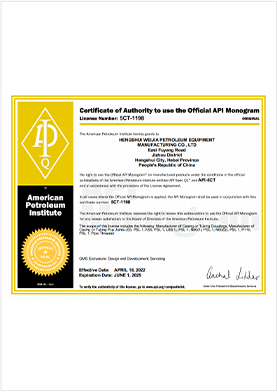- Afrikaans
- Albanian
- Amharic
- Arabic
- Armenian
- Azerbaijani
- Basque
- Belarusian
- Bengali
- Bosnian
- Bulgarian
- Catalan
- Cebuano
- Corsican
- Croatian
- Czech
- Danish
- Dutch
- English
- Esperanto
- Estonian
- Finnish
- French
- Frisian
- Galician
- Georgian
- German
- Greek
- Gujarati
- Haitian Creole
- hausa
- hawaiian
- Hebrew
- Hindi
- Miao
- Hungarian
- Icelandic
- igbo
- Indonesian
- irish
- Italian
- Japanese
- Javanese
- Kannada
- kazakh
- Khmer
- Rwandese
- Korean
- Kurdish
- Kyrgyz
- Lao
- Latin
- Latvian
- Lithuanian
- Luxembourgish
- Macedonian
- Malgashi
- Malay
- Malayalam
- Maltese
- Maori
- Marathi
- Mongolian
- Myanmar
- Nepali
- Norwegian
- Norwegian
- Occitan
- Pashto
- Persian
- Polish
- Portuguese
- Punjabi
- Romanian
- Russian
- Samoan
- Scottish Gaelic
- Serbian
- Sesotho
- Shona
- Sindhi
- Sinhala
- Slovak
- Slovenian
- Somali
- Spanish
- Sundanese
- Swahili
- Swedish
- Tagalog
- Tajik
- Tamil
- Tatar
- Telugu
- Thai
- Turkish
- Turkmen
- Ukrainian
- Urdu
- Uighur
- Uzbek
- Vietnamese
- Welsh
- Bantu
- Yiddish
- Yoruba
- Zulu
Innovative Crossover Drilling Solutions for Enhanced Efficiency and Performance in Oil Exploration
The Crossover Drilling Tool Revolutionizing the Drilling Industry
In the ever-evolving landscape of the oil and gas industry, the need for innovative tools and technologies has never been more critical. One such groundbreaking invention is the crossover drilling tool, a piece of equipment that is transforming the way drilling operations are conducted. By bridging the gap between different drilling systems, this tool enhances efficiency, reduces costs, and improves overall performance.
What is a Crossover Drilling Tool?
A crossover drilling tool is a versatile device designed to enable seamless connections between various types of drilling equipment and systems. It essentially serves as an interface that allows operators to switch between different drilling modes and technologies without the need for extensive modifications or reconfiguration of the entire drilling assembly. This flexibility is particularly valuable in complex drilling environments where conditions can change rapidly, demanding quick adaptations to the drilling strategy.
Benefits of Crossover Drilling Tools
1. Enhanced Flexibility One of the primary advantages of crossover drilling tools is their ability to accommodate multiple drilling technologies. This flexibility allows operators to apply the most suitable method for a specific segment of the well, whether that involves rotary drilling, directional drilling, or even managed pressure drilling. This adaptability can lead to increased efficiency and reduced operational downtime.
2. Cost Efficiency By minimizing the need for specialized tools and reducing the time required for switching between different drilling systems, crossover tools help lower overall project costs. Furthermore, they reduce the inventory of spare parts and tools needed on-site, cutting down on capital expenditures and logistical challenges associated with transporting equipment.
crossover drilling tool

3. Improved Performance Crossover drilling tools are engineered to optimize the functionality of both the drilling rig and the various drilling mechanisms in use. They facilitate better torque transfer and fluid management, which can lead to enhanced rate of penetration (ROP) and improved hole quality. This performance boost is crucial in competitive drilling environments where time and efficiency directly impact profitability.
4. Safety and Reliability The design of crossover drilling tools incorporates advanced materials and technologies that ensure durability and performance under extreme conditions. By providing reliable connections and reducing the chances of equipment failure, these tools contribute to safer drilling operations. This reliability enhances not only the safety of the crew but also the integrity of the well being drilled.
Real-World Applications
Crossover drilling tools have found applications in various sectors of the oil and gas industry, as well as in geothermal and mining operations. For example, in offshore drilling, where conditions can be particularly challenging, the ability to quickly adjust drilling techniques using crossover tools can lead to significant time savings and cost reductions. Similarly, in the exploration phase, where adaptability is key, crossover tools allow geologists and engineers to test different drilling strategies effectively.
Conclusion
As the demand for energy continues to rise and drilling operations grow increasingly complex, the role of crossover drilling tools cannot be overstated. These innovative devices not only enhance flexibility and efficiency but also contribute to safer and more cost-effective drilling practices. As technology advances and the industry seeks new methods to optimize performance, crossover drilling tools are poised to remain at the forefront of drilling innovation, paving the way for a more efficient and sustainable energy future. The adoption of such tools is essential for any drilling operation aiming to stay competitive in this dynamic marketplace.
-
Tubing Pup Joints: Essential Components for Oil and Gas OperationsNewsJul.10,2025
-
Pup Joints: Essential Components for Reliable Drilling OperationsNewsJul.10,2025
-
Pipe Couplings: Connecting Your World EfficientlyNewsJul.10,2025
-
Mastering Oilfield Operations with Quality Tubing and CasingNewsJul.10,2025
-
High-Quality Casing Couplings for Every NeedNewsJul.10,2025
-
Boost Your Drilling Efficiency with Premium Crossover Tools & Seating NipplesNewsJul.10,2025







